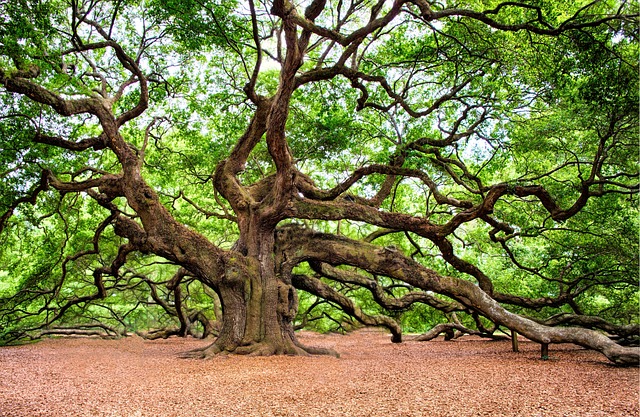Once upon a time, a small acorn fell to the forest floor. As it nestled among the leaves, it spent its first winter waiting. When the spring’s sun warmed the air and its rains moistened the soil, the little nut sent out a root below and a shoot above.
Within weeks the small tree had established itself and over the coming years, it pushed its way through the other foliage to reach the canopy. Gradually the oak began to enjoy more space as older trees died away. Its waistline also grew with the increase in water and nutrients. Whitey was growing into his own.
Over a few hundred years, this sturdy oak occupied a prominent place in the woodlands. His branches housed countless broods of birds and his acorns fed deer, squirrels, and turkeys.
About a hundred years ago, however, this mighty tree began noticing changes. At first his chestnut neighbors took ill and fell to the ground. These trees had worked with Whitey’s family to feed the wildlife and provide wood for those short two-stemmed trees that walked and talked. Now the oaks would have to carry more of this load.
A while later, some of his offspring were severely weakened by a new caterpillar with blue and red spots. Some were so damaged, they were not able to survive the harsh winter. The load grew heavier.
A few years after this, the stately monarch realized his ash friends were dying after a green beetle visited each one. The Ash family had also helped provide wood and food, but no more. Slowly, many of Whitey’s friends descended enriching the soil with their decaying wood.
In place of these once established givers, some new invasive neighbors moved in. They grew very fast but the wood of ailanthus was of little use and its abundant seeds fed virtually nothing. These trees just occupied space and absorbed nutrients needed by Whitey and his few remaining helpers.
As the aged oak took stock, he lamented the ecosystem his children would grow up in. Not only would they have to compete against these fast growers, they would also need to carry the responsibility of feeding the forest and providing raw materials. Sadly, the old tree prayed for things to improve but knew the future would be difficult without some help.
While the toll from the chestnut blight, gypsy moth caterpillars, emerald ash borers and other pests are high, our Virginia forests are incredibly resilient. Nevertheless, careful management is needed to ensure food and habitat for native wildlife as well as forest products for us.
But the situation experienced by our oaken friend reminds us of how our culture has changed around us. A country that once taught the Bible to its children and looked to God’s Word for national guidance is radically different from the one in which we live today.
Many Christian influences in schools, media, government and athletics have fallen only to be replaced by politically correct and atheistic viewpoints that eliminate Jesus from our forest. In Europe, it’s even worse. For the first time since the Dark Ages, less than 50% of Europeans even identify as Christian and the cultural costs are obvious.
While Christians historically protected religious freedom and championed human liberty, many atheists and non-Christians do not. In addition, many of these invasive worldviews fail to care for society’s poor and infirm. Like Whitey, the church has stood where it has for the last two thousand years, but the culture has radically changed around her, and not for the better.
Thankfully, we have an opportunity to impact our cultural environment in a way the oak did not. The Gospel of Jesus Christ is the most transformative power on earth. We just need to share Jesus with others. In the interest of our children and the entire forest of our culture, let’s work together to reach our society with the Good News!
Blessings, George
